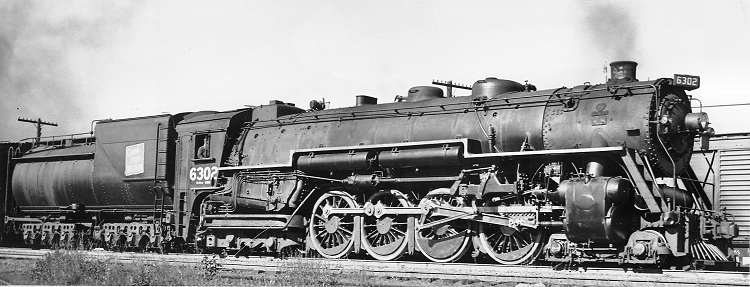Most Canadian National lines in the United States were operated under other names: Duluth, Winnipeg & Pacific, in Minnesota; Grand Trunk Western, in Michigan, Indiana and Illinois; and Grand Trunk in New England. The Central Vermont also belonged to the CNR system. The engines of all lines except the CV were numbered and classified in the same system roster, but due to customs legalities the lines in the United States bought their new locomotives from American builders. Thus the Grand Trunk Western's first 4-8-4s, Nos. 6300-6311 of class U-3-a, were delivered by ALCo in 1927. When the 25 engines in class U-3-b began to arrive on the Grand Trunk Western in 1942, the U-3-a class was transferred to Canadian National or Grand Trunk operations in the East. In the above photo by James Adams we see No. 6302 at an unknown location in its original Grand Trunk Western guise. Notable features are the Baker valve gear and the outboard-journal pilot truck, whereas the GTW's U-3-b class had the Walschaerts gear and inboard journals on the pilot truck.
The heavy horizontal bar over No. 6302's trailing truck reveals that she has an outside-cradle frame (sometimes called a "banjo" frame) which divides behind the driving wheels to create greater clearance under the firebox. The first groups of CNR system 4-8-4s shared this feature with most earlier locomotives that had a four-wheel trailing truck. Later designs abandoned the arrangement because the frame was prone to cracking, especially at speed. For this reason the U-3-a class, unlike the GTW's U-3-bs, was restricted to freight service after the late 1930s. For the dimensions of the U-3-a class, consult the commentary on CNR 6309 in our Random Steam Canada Collection.
